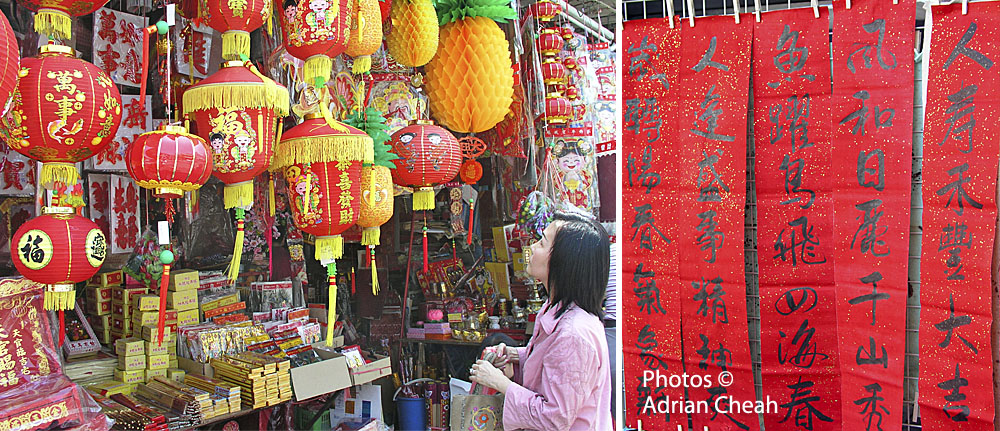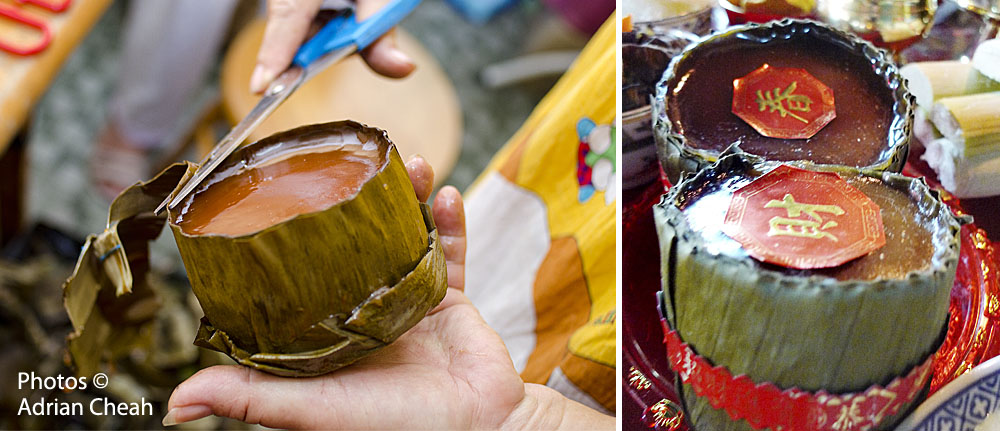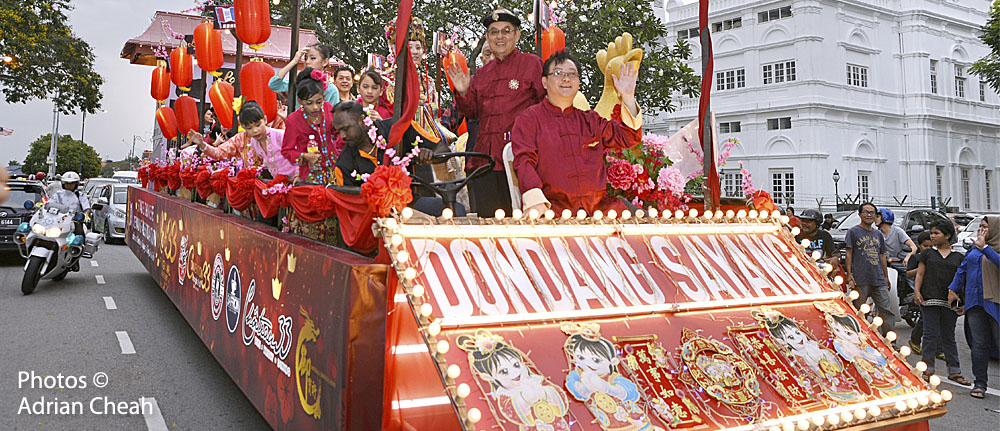The Spring Festival – an insight into the festivities of Chinese New Year

The Chinese community observes various festivals, encompassing both religious and secular occasions. Among these, a particularly significant celebration is the Spring Festival, commonly referred to in Penang as Chinese New Year or Lunar New Year.
The Chinese lunar calendar, dating back thousands of years, aligns with the moon's cycles. A complete cycle takes 60 years, made up of five cycles of 12 years each (12 Chinese zodiac animals taking turns to govern each year). Unlike the Gregorian calendar, the start of the Chinese lunar calendar can fall anywhere between late January and the middle of February. Thus, the first day of the new lunar year that marks the beginning of the Chinese New Year celebrations varies annually.
Why is the Chinese New Year also known as the Spring Festival?

Astrologers describe springtime as a season of renewal, when new life springs forth after the cold and passiveness of winter. Similarly, the Chinese New Year marks a time of fresh beginnings.
Preparations for the festivities
As preparations for the festivities unfold, the 20th day of the 12th moon is designated for the annual house cleaning ritual. This involves a meticulous sweeping and cleaning of every nook and cranny in anticipation of the upcoming new year. A small bunch of bamboo leaves is tied to a long pole to reach high places and dispel cobwebs. Debts must be paid, hair, cut and coiffed as well as new clothes and shoes, bought.

An auspicious "chai" or red banner bearing well wishes of wealth and prosperity is prominently displayed above the front door. A pair of red paper strips inscribed with propitious sounding couplets are hung at entrances, ushering blessings for a brighter and more prosperous year ahead.

On the 23rd of the last month of the year, the Kitchen God, revered as the inventor of fire, departs from the household to present a report to heaven about the family. Although the household would have done all they could to ensure a favourable report, no chances are taken and the Kitchen God's mouth and lips are sweetened and if need be, sealed with a sweet meat called ti kuih (a homophonic word which means both "auspicious year" and "sticky cake" in Hokkien). With lips sufficiently sugar-coated and safely sealed, he is given a grand send-off, only to return once more on the first day of Chinese New Year.
In many Chinese homes and temples, incense and joss sticks are burned as an offering to the gods as well as a mark of respect to their departed ancestors.
A time for reunion dinners and celebrations

The presence of every immediate family member on the eve of the new year holds paramount importance. For those residing at a distance, the journey homeward typically commences well in advance. The anticipation of the reunion dinner and the joy of reconnecting with loved ones turn these journeys into noteworthy events. Regardless of any weariness resulting from the travels, it is a tradition that demands the attendance of all family members at the annual feast.



The dishes presented, needless to say, deviate from the ordinary fare of daily meals. Possessing! These dishes have auspicious-sounding names, many incorporating grand and expensive ingredients as well. Noteworthy elements include abalone, black sea moss (fatt choy), fish, prawns, dried oysters, lettuce, long noodles, lotus seeds, ginkgo nuts, dried bean curd, and bamboo shoots. The scrumptious spread is often a luxurious feast, with some families choosing a steamboat affair as an alternative celebration style.

Must-have snacks include mandarin oranges, roasted pumpkin or melon seeds and peanuts. Feasting on such "auspicious" treats is believed to bestow prosperity and plenty of good luck to the family.
To usher in the new year, family members young and old would stay awake, engaging in various activities such as playing card games, mahjong, binge watching their favourite movies, playing fireworks or just while away time indulging in juicy gossip and latest happenings.
Celebrating the first 15 days the new year
On the 1st day of Chinese New Year, celebrants don new festive attire complete with jewellery and for the aunties, elaborate hair dos. The day begins with paying homage at the altar to honour departed family members, followed by prayers of gratitude offered to the gods.

Younger family members express their well-wishes to elders with a hearty "Gong Xi Fa Cai" (in Mandarin) or "Keong Hee Huat Chye" (in Hokkien), meaning "congratulations on great prosperity". In return, children and unmarried members will receive red packets (ang pow) filled with cash from parents, married family members and friends. The feasting extravaganza extends throughout the day, evolving into an unending eating marathon in my household. For those who enjoy dining out, reservations would have been made at their favourite restaurants. Visiting relatives and friends will ensue the next few days, always accompanied by the customary gift of mandarin oranges.

The 7th day of Chinese New Year is known as "everybody's birthday". On this occasion, the Chinese community especially businessmen will feast on "yee sang". This dish is a prosperity tossed salad of pickled ginger, finely shredded vegetables, raw fish or seafood, crackers, crushed peanuts, toasted sesame seeds, seasoning and sauces.
This dish is believed to ensure prosperity and good fortune to those who relish it. Diners will mix and toss the ingredients as high as they possibly can with chopsticks, exclaiming good wishes. The height to which these ingredients are tossed is thought to correlate with the level of prosperity one will enjoy throughout the year. I love the merriment of the rambunctious excitement and no one at the next table will ever ask you to tone it down.

The 9th day holds particular significance for the Hokkien community. Some traditionalists venture as far as to say that for the Hokkiens, the 9th day is even more important than the New Year itself, for it is on this day that the entire Hokkien clan were spared from being massacred.

Preparations commence on the morning of the 8th day for the Hokkiens. They will rush to the market to buy all the essential items needed for the celebration including entire sugar cane stalks, roasted pigs, cooked meats and fruits. At the stroke of midnight, a gratitude-filled ceremony unfolds in honour of the Jade Emperor, also recognised as the God of Heaven. Firecrackers are let off and the night sky is ablaze with sky rockets and fireworks. For Hokkien businessmen, the festival is approached with considerable gravity – their abundant offerings serve as both expressions of gratitude and votive gestures, all in hopeful anticipation of a prosperous year ahead!



To commemorate the birthday of the Jade Emperor, a plethora of offerings graces the forecourts and central courtyards of homes and temples. If you are in Penang on the eve of the celebrations, head down to the clan jetties in the heart of George Town to join in the festivities and witness a mammoth offering table laden with scrumptious treats for the God of Heaven.
In Hakka traditions, it is customary to consume nine varieties of vegetables on the ninth day, adding a distinctive culinary ritual to their observance of this auspicious occasion.



The 15th day signifies the conclusion of the New Year festivities. For the Hokkiens, the 15th night is also known as Chap Goh Meh. In Penang, the Hokkien community commemorates this day with lion and dragon dances, Chingay and in the past, even a parade where stilt walkers and acrobats move slowly along the busy streets of George Town to the beat of gongs, drums and cymbals. At times, the state organises a live concert at the Esplanade, adding a festive musical touch to the conclusion of the Chinese New Year celebrations.


During the golden era of the Babas and Nyonyas, Chap Goh Meh in Penang was an occasion of grand festivities. It is said that in those days, maidens, dressed to the nines in their resplendent Kebayas complete with fine jewellery, would ride along the coastal roads to throw mandarin oranges into the sea, expressing their desire for a good husband. It was believed that wishes made on this auspicious night held a greater likelihood of being granted by the heavenly powers. For the Babas and Nyonyas, Chap Goh Meh was not only a celebration but also reminiscent of Valentine's Day, characterised by an atmosphere filled with romance.

Although Dondang Sayang groups still ply the streets of George Town to serenade the Chap Goh Meh revellers, singing their pantuns from illuminated buses or floats; this form of entertainment is rather rare nowadays. Regrettably, the true appreciation for pantuns and traditional songs appears to be dwindling, with the older generation being the primary audience. The art of "berbalas pantun," or spontaneous poetry jousting, is gradually fading, and the younger generation seems less adept at preserving this cultural practice.
Beliefs and taboos
During the new year, the Chinese community observes specific taboos and spiritual beliefs. For instance, a hiatus is maintained on the third day of the fifteen-day celebration. Businesses close and visiting is discouraged, rooted in the belief that misfortune might befall the family otherwise.
Sweeping the floor on the first day is strictly forbidden, as it is thought to sweep away all luck and fortune. Caught in the act during this auspicious period, one risks a severe tongue-lashing.
The rice urn should be cleaned and filled to the brim with a new batch of rice. Alternatively, a packet of uncooked rice sporting a red paper cutting can be displayed. A fresh new ang pow containing money must also be placed underneath. One is also obliged to have a minimum of two or more helpings of food at every meal over the 15 days as it symbolises abundance – a practice that inevitably challenges my waistline.
Uttering pleasant words to others in the morning is believed to bring goodwill to encounters throughout the day – a commendable habit to cultivate daily. Wearing new clothes on the 1st day of the Chinese New Year is considered auspicious, with red attire being especially favoured. Gamblers often opt for red undergarments to boost their winning streak.
As a taboo, all forms of vulgarity and harsh language are prohibited to avoid scandals throughout the year. Maintaining composure and refraining from losing one's temper is essential, as it is believed to signify a year filled with conflict and continued bad temper. Adhering to these taboos promises a year of abundance, wealth, and prosperity.
-------------------------------------
Written and photographed by Adrian Cheah
© All rights reserved
Updated 8 February 2024
PS: In 2021, lockdowns and social distancing were the new normal

Although Chinese New Year in 2021 had been very different due to the Covid-19 pandemic, it did not stop many from spending quality time with loved ones, both near and far. Aided by technology, this was made possible with Zoom Meeting and WhatsApp. It was wonderful to be able to see familiar faces and join in an active conversation with love ones, some continents apart. My niece in Australia was even able to partake in a card game hosted in Penang.